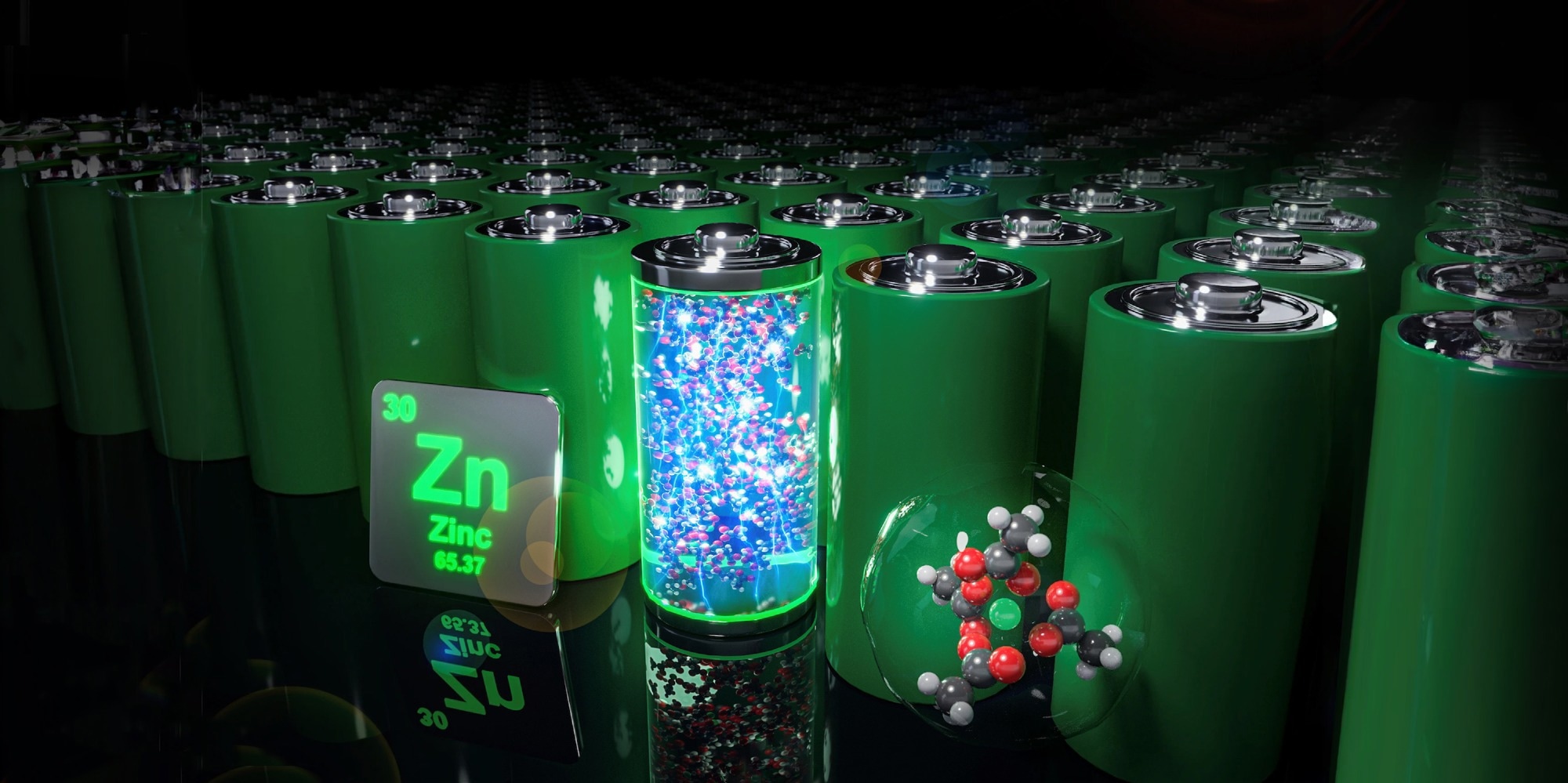Making batteries inexpensive, durable, efficient, safe, and eco-friendly concurrently is not easy. Scientists at ETH Zurich, however, have successfully managed to merge all of these characteristics in zinc metal batteries.

Zinc batteries are considered promising alternatives to lithium-ion batteries. (Visualizations/Image Credit: ETH Zurich / Xin Zou).
The world needs cheap and powerful batteries that have the potential to store sustainably produced electricity from sunlight or wind so that it can be used whenever it is required, even when there is no wind blowing or it is dark outside.
The most common batteries that are used to power our smartphones and electric cars are lithium-ion batteries. These are quite expensive as lithium is high in demand, and these batteries are also highly flammable.
Water-based zinc batteries provide a promising alternative to such lithium-ion batteries.
An international group of scientists headed by ETH Zurich has currently come up with a strategy that brings main progress to the development of such zinc batteries, thereby making them highly powerful, secure, and environmentally friendly.
Durability is a Challenge
Zinc batteries hold numerous advantages: Zinc is ample, inexpensive, and has a mature recycling infrastructure. Moreover, zinc batteries have the potential to store a lot of electricity.
Most significantly, zinc batteries do not require the use of highly flammable organic solvents like the electrolyte fluid, as they can be made using water-based electrolytes instead.
However, engineers often encounter difficulties while developing these batteries: when zinc batteries are subjected to charging at high voltage, the water present in electrolyte fluid reacts on one of the electrodes to make hydrogen gas. When this happens, the battery performance reduces, and electrolyte fluid diminishes.
This reaction also causes extra pressure to build up in the battery, which could be detrimental.
Another problem is the formation of spikey deposits of Zinc at the time of charging of the battery, called dendrites, that can pierce through the battery and, in the worst case, even cause a short circuit and render the battery unusable.
Salts Make Batteries Toxic
Over the last few years, engineers have attempted to enrich the aqueous liquid electrolyte with salts in order to keep the water content as low as possible.
However, this also has its disadvantages: it makes the electrolyte fluid viscous, which decelerates the charging and discharging processes significantly.
Additionally, many of the salts that tend to be used contain fluorine, meaning that they are harmful to the environment.
Maria Lukatskaya, Professor of Electrochemical Energy Systems at ETH Zurich, has joined forces with collaborators from numerous research institutions in the United States and Switzerland to systematically search for the perfect salt concentration for water-based zinc-ion batteries.
With the help of experiments assisted by computer simulations, the scientists were able to disclose that the perfect salt concentration is not, as was earlier assumed, the highest one possible but a comparatively low one: five to ten water molecules per salt’s positive ion.
Long-Lasting Performance and Fast Charging
The scientists did not use any environmentally detrimental salts for their improvements, opting rather for eco-friendly salts of acetic acid, known as acetates.
With an ideal concentration of acetates, we were able to minimize electrolyte depletion and prevent Zinc dendrites just as well as other scientists previously did with high concentrations of toxic salts. Moreover, with our approach, the batteries can be charged and discharged much faster.
Dario Gomez Vazquez, Study Lead Author and Doctoral Student in Lukatskaya’s Group, ETH Zurich
Until now, ETH scientists have tested their new battery plan on a comparatively small laboratory scale. The next step will be to scale up the method and see if it could be translated into bigger batteries.
Ideally, these might one day be used as storage units in the power grid to compensate for fluctuations, say, or in the basements of single-family homes to allow solar power produced during the day to be used in the evening.
Yet, there are still a few difficulties that need to be overcome before zinc batteries will be commercially available on the market. As ETH Professor Lukatskaya explains: batteries are comprised of two electrodes — the cathode and the anode — and the electrolyte fluid between them.
We showed that by tuning electrolyte composition efficient charging of Zinc anodes can be enabled. Going forward, however, performance cathode materials will have to be optimized as well to realize durable and efficient zinc batteries.
Dario Gomez Vazquez, Study Lead Author and Doctoral Student, Lukatskaya’s Group, ETH Zurich
Journal Reference:
Vazquez, D. G., et al. (2023) Creating water-in-salt-like environment using coordinating anions in non-concentrated aqueous electrolytes for efficient Zn batteries. Energy & Environmental Science. https://doi.org/10.1039/d3ee00205e.